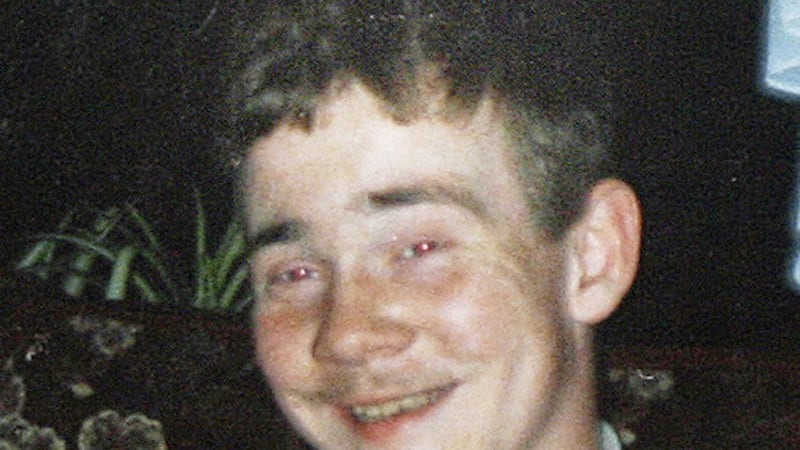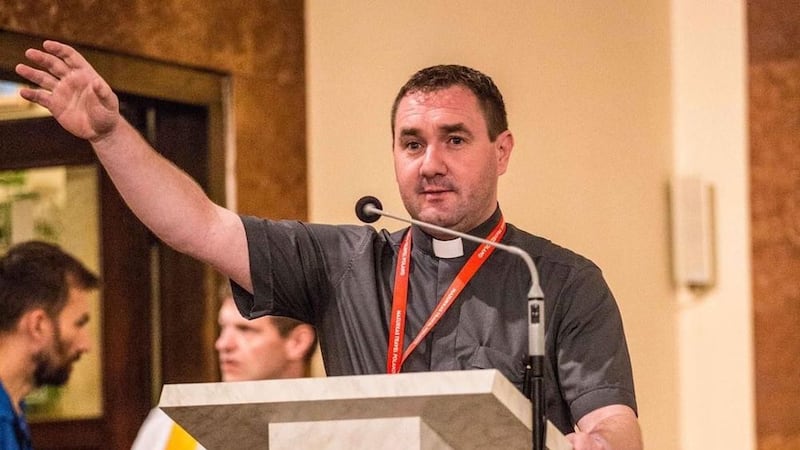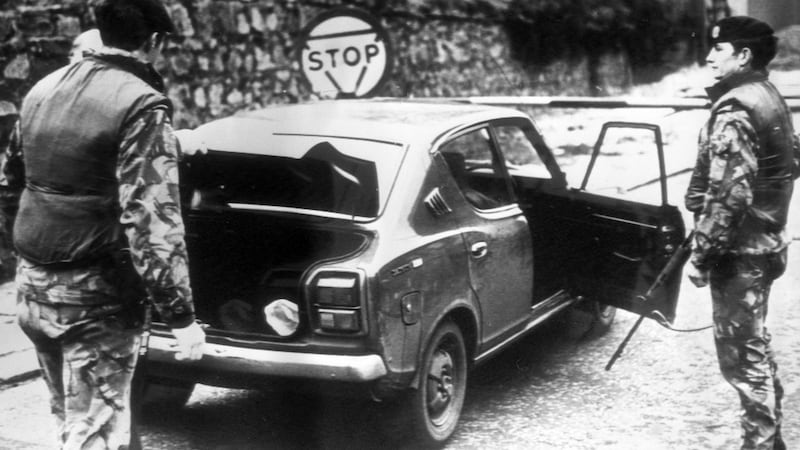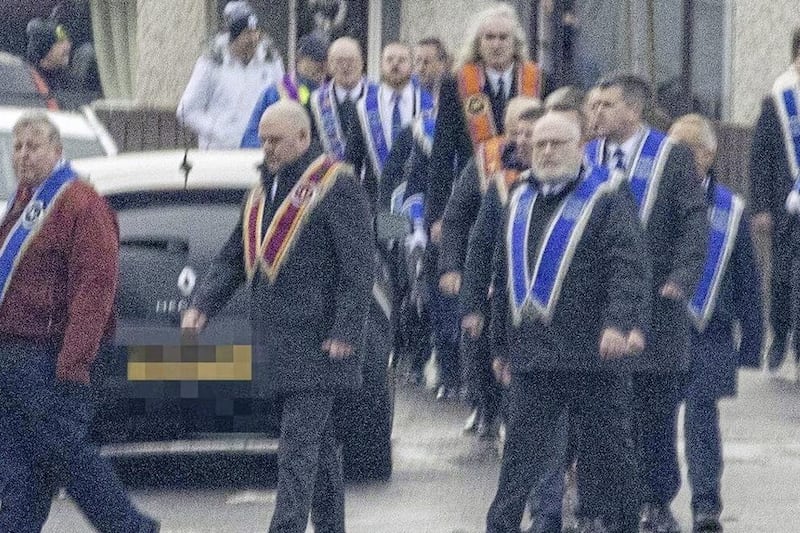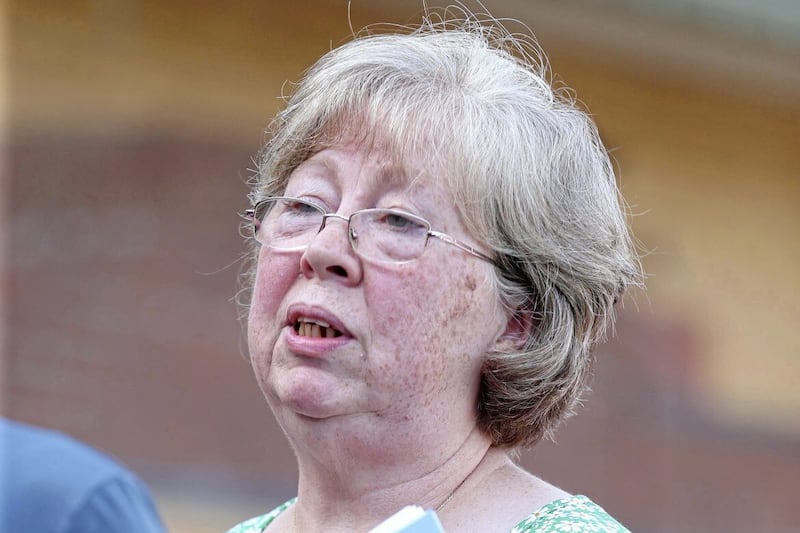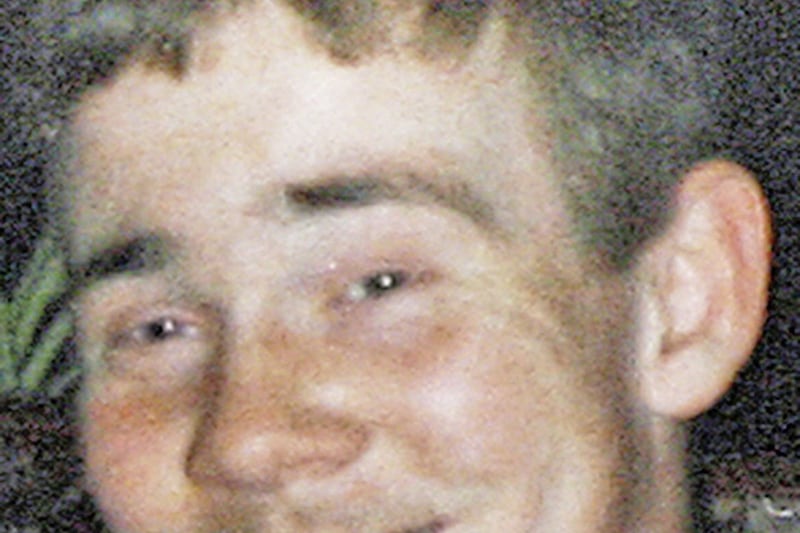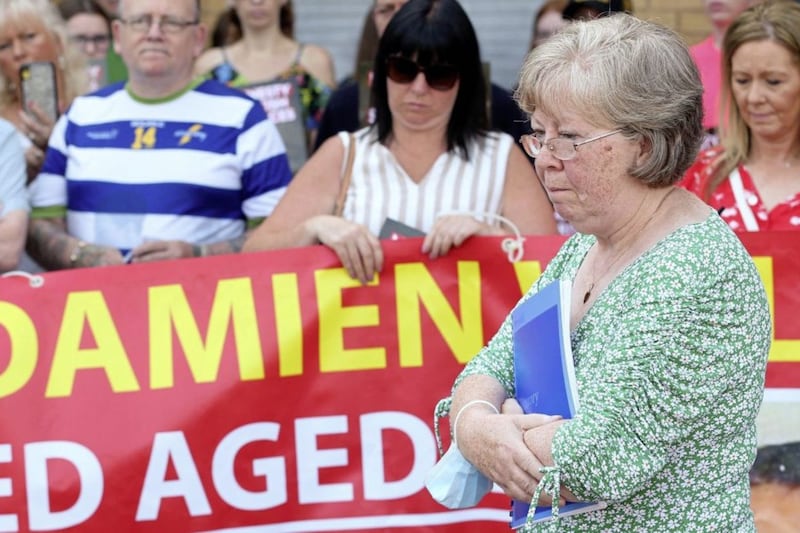THERE were "significant investigative failures" and evidence of "collusive behaviours" by police in relation to the loyalist murder of a teenager in west Belfast almost 30 years ago, a report has found.
Damien Walsh (17) was gunned down by Johnny Adair's notorious ‘C Company' as he worked at the Dairy Farm shopping centre near Twinbrook on the outskirts of west Belfast on March 25 1993.
In the delayed report Police Ombudsman Marie Anderson said she believes that information was not shared with investigators to “safeguard sources of information” and that consequently the murder probe was “impeded”.
In her report Mrs Anderson last night revealed that the UDA was receiving “targeting information directly from British intelligence".
Significantly, she also reveals that in late June 1993 intelligence was received that "police were providing information to loyalists about individuals in west Belfast".
“Two incidents were referred to, one of which was Damien’s murder,” she said.
Read More:
- Damien Walsh’s mother believes her murdered teenage son was 'victim of collusion'
- Damien Walsh killer believed to be Stephen McKeag
The 17-year-old, who was from Poleglass, was working at the centre as part of a youth training scheme, when his life was cut short.
Another man who was standing close by was injured.
The teenager’s grieving mother Marian first lodged a complaint with then Police Ombudsman Nuala O’Loan in 2014.
Since then the matter has been considered by all three of Mrs Loan’s successors.
In her report, Mrs Anderson reveals that a surveillance operation on the UDA team that carried out the killing was lifted three days before the teenager was shot dead, March 22, before resuming again on March 30 - five days after the killing.
During that period, on March 24, the killer gang also shot dead Sinn Féin member Peter Gallagher, from Toome in Co Antrim, as he arrived for work close to the Grosvenor Road in Belfast.
In her report Mrs Anderson said intelligence showed that a central figure in ‘C Company’, referred to as Person A, demonstrated that he was “actively targeting” members of the nationalist community in west Belfast between March 22 – March 25 1993 and this culminated in the two murders.
Ms Andersons said that police have told her office surveillance on the UDA hit squad was lifted in order to “concentrate resources on two other operations”.
This includes a joint British army and RUC surveillance operation on an IRA fertilizer dump at Dairy Farm, which was the scene of the Walsh shooting.
At the time the IRA used fertilizer in the construction of bombs.
The second operation also concerned IRA activities.
It has also emerged that in the aftermath of the attack inaccurate information was circulated as to the make and model of the about the killers' getaway car.
Mrs Anderson’s report believes this hindered an opportunity to apprehend those responsible.
“Whilst this was a sudden attack, I am of the view that an opportunity existed for police to apprehend the gunmen after the attack,” the report said.
It has been confirmed that a senior investigating officer, who was looking into Mr Walsh’s murder, was never told about the joint RUC/ British army operation at Dairy Farm.
She also reveals that “key pieces of intelligence relevant to Damien’s murder were either not shared with the SIO or their dissemination delayed, diminishing their potential value.
“Lines of enquiry could have been developed and evidence gathered which may have resulted in arrests and convictions.”
She said her investigation was unable to identify the reasons for "information and intelligence not being shared".
"I am of the view that these failures arose from internal police policies designed to safeguard sources of information,” she said.
“The investigation of Damien’s murder was, consequently, impeded.
“I am of the view that the failure to share, or not share in a timely manner, these pieces of intelligence, were deliberate decisions that constituted collusive behaviour on the part of police."
The ombudsman's report reveals that police intelligence indicated the involvement of seven named individuals in the murder of Mr Walsh.
She said that none of the seven was ever arrested specifically about the murder.
While three were arrested under prevention of terrorism legislation, only on individuals, identified only as Person I, was questioned about the killing.
Although named the other four were never arrested.
No-one has ever been charged.
It has now emerged that Person I, who was one of the gunmen involved in the three-man hit team, was due to take part in an identity parade after his arrest.
Mrs Anderson reveals that a witness, who was due to take part, subsequently “failed to engage” with the process and the line-up was never rescheduled.
The report also confirms that the gun used to kill the 17-year-old was part a haul imported into the north by loyalists from South Africa in 1987.
It is believed by some the weapons, which have been linked to the deaths of around 70 people, were smuggled into the north with the knowledge of British intelligence.
In June 1994 the murder gun, a 9mm Browning handgun, was found by police in east Belfast.
It has also been linked to a second murder in 1991, which was also claimed by the UDA/UFF.
Assistant Chief Constable Jonathan Roberts said: “Damien Walsh was an innocent young man killed by a despicable act of terrorism. The pain of such a grievous loss does not fade and I am acutely aware that today will be very upsetting for the family. My thoughts are with them.
"The police service will now carefully consider the Police Ombudsman’s report with a view to identifying appropriate next steps.”
